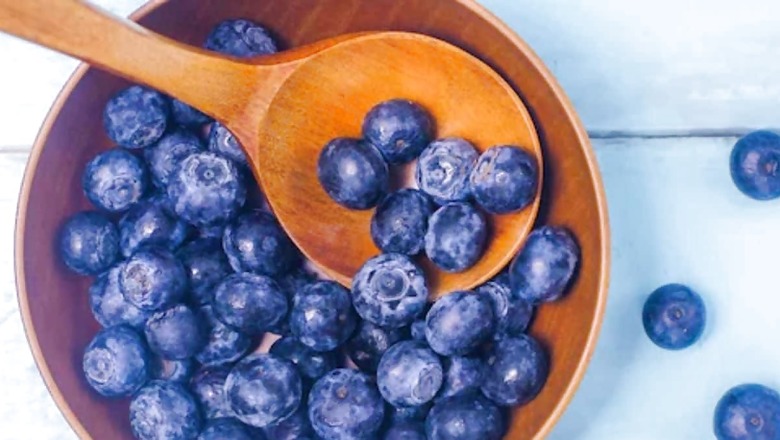
views
Those who have eaten a ripe blueberry must have observed that the blue colour on the outside does not match the dark and reddish purple hue on its inside. The outer layering of the fruit does not, however, necessarily contain the blue pigments. According to research published in the Science News Explores, the outer covering of the blueberry is just a wax coat that appears to be blue. Rox Middleton and her team have found these conclusions in their research. Middleton is a physicist who works at the University of Bristol in England and Dresden University of Technology in Germany. This wax on the outer covering contains many tiny structures, each less than a thousandth the thickness of a piece of paper. Such nanostructures scatter blue and ultraviolet (UV) light and thus the fruits appear to our eyes as blue. Birds can see the UV light and may probably see such fruits as bluey-UV. Blue is not a commonly seen colour in nature. Some fruits do appear blue and others contain pigments in that colour. Taking the example of the latter, blueberries contain a heaping amount of anthocyanin, a skin pigment that should have left each sphere of fruit a dark red.
This is, however, not the case. According to Middleton, after rubbing the outer layer of the wax, a blueberry doesn’t look blue or red. Instead, as the lead researcher said, it is completely dark. To reach these conclusions, Middleton’s team zoomed in on the skin of many fruits using a high-resolution microscope. They then shared their findings on February 7 in the Science Advances journal.
Another feather to the cap of Middleton’s team is that they have also managed to recreate this effect in the lab. They placed wax from Oregon grapes (a flowering herb) in a solution of carbon-based molecules. The wax dissolved and turned transparent. The wax dried into a crystalline material after being spread on a card. The crystalline material is a solid in which the molecules form a repeating pattern and as a crystal, the waxy layer again appears blue. According to Middleton, this type of colouring could provide a new way to tint plastics or makeup blue.



















Comments
0 comment